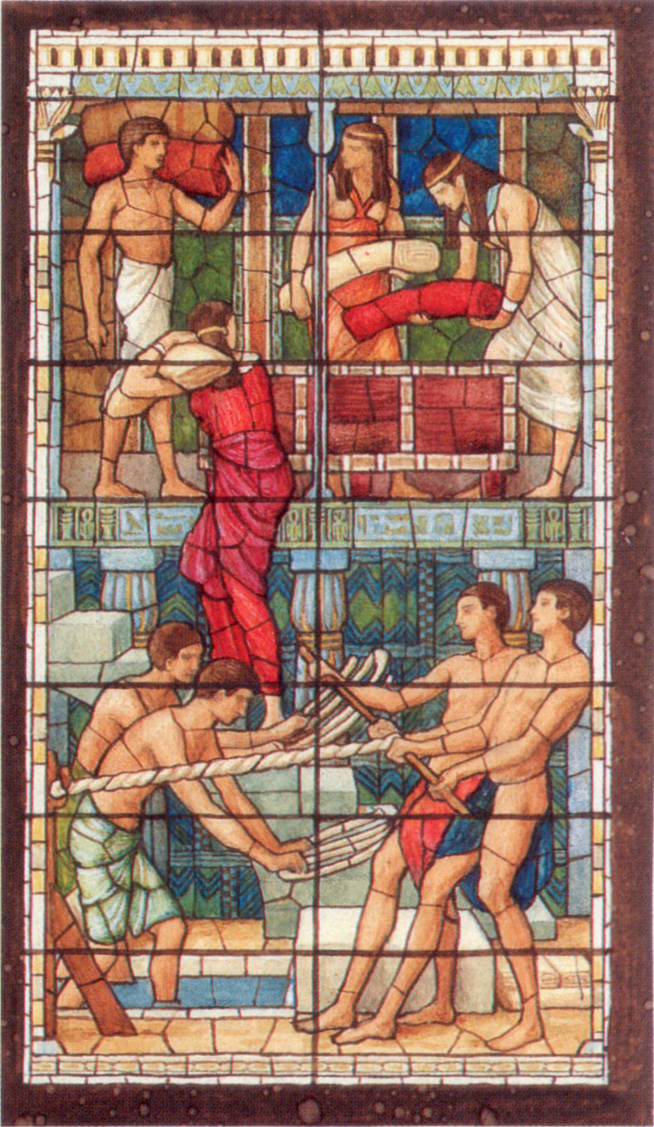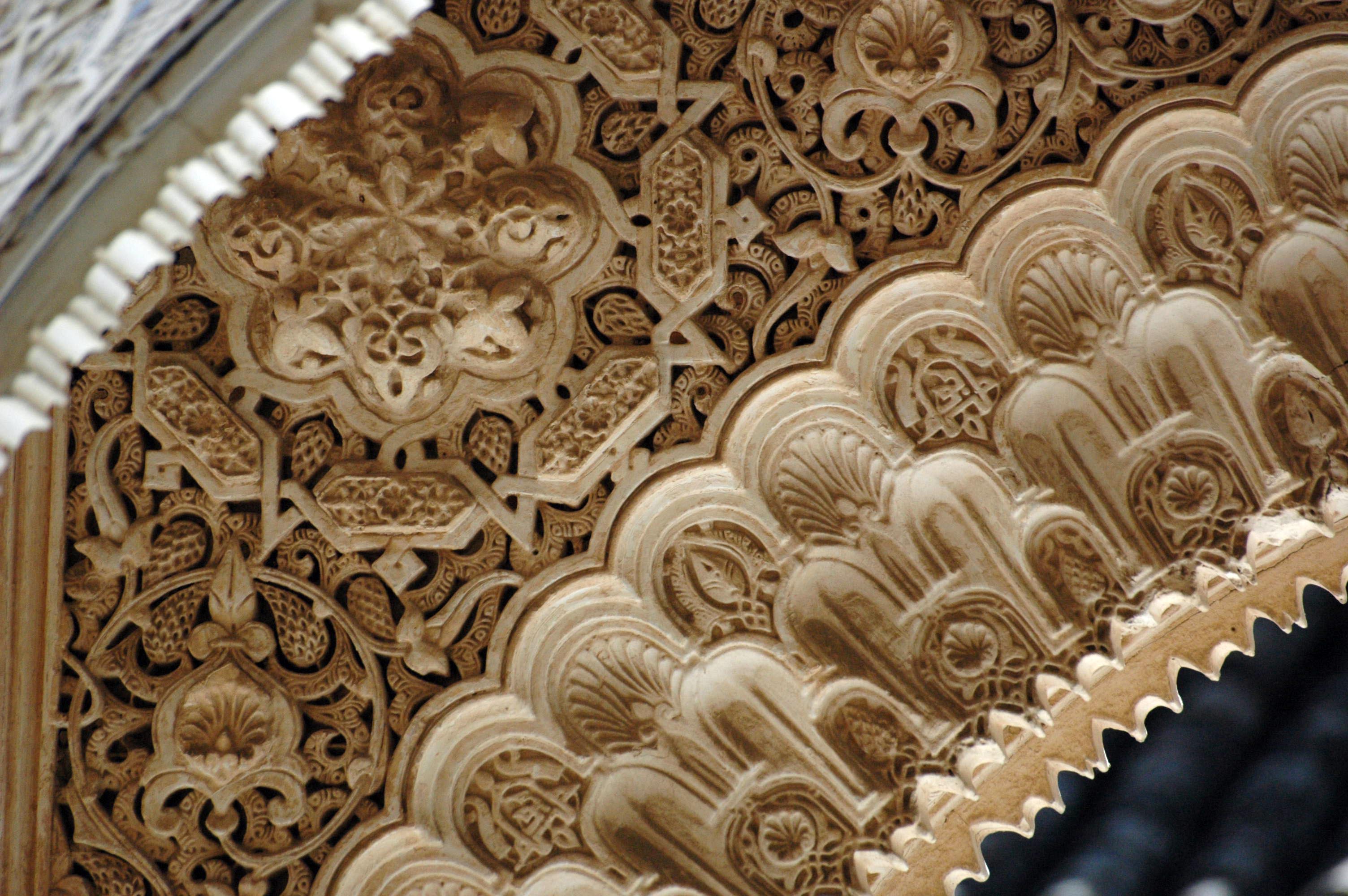|
Furnishings
] The decorative arts are arts or crafts whose aim is the design and manufacture of objects that are both beautiful and functional. This includes most of the objects for the interiors of buildings, as well as interior design, but typically excludes architecture. Ceramic art, metalwork, furniture, jewellery, fashion, various forms of the textile arts and glassware are major groupings. Applied arts largely overlap with the decorative arts, and in modern parlance they are both often placed under the umbrella category of design. The decorative arts are often categorized in distinction to the "fine arts", namely painting, drawing, photography, and large-scale sculpture, which generally produce objects solely for their aesthetic quality and capacity to stimulate the intellect. Distinction from the fine arts The distinction between the decorative and fine arts essentially arose from the post-renaissance art of the West, where the distinction is for the most part meaningful. Thi ... [...More Info...] [...Related Items...] OR: [Wikipedia] [Google] [Baidu] |
Interior Design
Interior design is the art and science of enhancing the interior of a building to achieve a healthier and more aesthetically pleasing environment for the people using the space. With a keen eye for detail and a Creativity, creative flair, an interior designer is someone who plans, researches, coordinates, and manages such enhancement projects. Interior design is a multifaceted profession that includes conceptual development, space planning, site inspections, programming, research, communicating with the stakeholders of a project, construction management, and execution of the design. History and current terms In the past, interiors were put together instinctively as a part of the process of building.Pile, J., 2003, Interior Design, 3rd edn, Pearson, New Jersey, USA The profession of interior design has been a consequence of the development of society and the complex architecture that has resulted from the development of industrial processes. The pursuit of effective use of ... [...More Info...] [...Related Items...] OR: [Wikipedia] [Google] [Baidu] |
Furniture
Furniture refers to objects intended to support various human activities such as seating (e.g., Stool (seat), stools, chairs, and sofas), eating (table (furniture), tables), storing items, working, and sleeping (e.g., beds and hammocks). Furniture is also used to hold objects at a convenient height for work (as horizontal surfaces above the ground, such as tables and desks), or to store things (e.g., cupboards, Shelf (storage), shelves, and drawers). Furniture can be a product of design and can be considered a form of decorative art. In addition to furniture's functional role, it can serve a symbolic or Religion, religious purpose. It can be made from a vast multitude of materials, including metal, plastic, and wood. Furniture can be made using a variety of woodworking joints which often reflects the local culture. People have been using natural objects, such as tree stumps, rocks and moss, as furniture since the beginning of human civilization and continues today in some househol ... [...More Info...] [...Related Items...] OR: [Wikipedia] [Google] [Baidu] |
Textile Arts
Textile arts are arts and crafts that use fiber crop, plant, Animal fiber, animal, or synthetic fibers to construct practical or decorative Physical object, objects. Textiles have been a fundamental part of human life since the beginning of civilization. The methods and materials used to make them have expanded enormously, while the functions of textiles have remained the same, there are many functions for textiles. Whether it be clothing or something decorative for the house/shelter. The history of textile arts is also the history of international trade. Tyrian purple dye was an important trade good in the ancient Mediterranean. The Silk Road brought China, Chinese silk to India, Africa, and Europe, and, conversely, Sogdian art#Textile arts, Sogdian silk to China. Tastes for imported luxury fabrics led to sumptuary laws during the Middle Ages and Renaissance. The Industrial Revolution was shaped largely by innovation in textiles technology: the cotton gin, the spinning jenn ... [...More Info...] [...Related Items...] OR: [Wikipedia] [Google] [Baidu] |
Islamic Art
Islamic art is a part of Islamic culture and encompasses the visual arts produced since the 7th century CE by people who lived within territories inhabited or ruled by Muslims, Muslim populations. Referring to characteristic traditions across a wide range of lands, periods, and genres, Islamic art is a concept used first by Western culture, Western Art history, art historians in the late 19th century. Public Islamic art is traditionally non-Representation (arts), representational, except for the widespread use of plant forms, usually in varieties of the spiralling Arabesque (Islamic art), arabesque. These are often combined with Islamic calligraphy, Islamic geometric patterns, geometric patterns in styles that are typically found in a wide variety of media, from small objects in ceramic or metalwork to large decorative schemes in tiling on the outside and inside of large buildings, including mosques. Other forms of Islamic art include Islamic miniature painting, artefacts like I ... [...More Info...] [...Related Items...] OR: [Wikipedia] [Google] [Baidu] |
Bowl With Cover MET SF06 377ab Img2 (cropped)
A bowl is a typically round dish or container generally used for preparing, serving, storing, or consuming food. The interior of a bowl is characteristically shaped like a spherical cap, with the edges and the bottom, forming a seamless curve. This makes bowls especially suited for holding liquids and loose food, as the contents of the bowl are naturally concentrated in its center by the force of gravity. The exterior of a bowl is most often round, but can be of any shape, including Rectangle, rectangular. The size of bowls varies from small bowls used to hold a single serving of food to large bowls, such as Punch (drink), punch bowls or salad bowls, that are often used to hold or store more than one portion of food. There is some overlap between bowls, cups, and Plate (dishware), plates. Very small bowls, such as the Chawan, tea bowl, are often called cups, while plates with especially deep wells are often called bowls. In many cultures, bowls are the most common kind of vess ... [...More Info...] [...Related Items...] OR: [Wikipedia] [Google] [Baidu] |
Aesthetics
Aesthetics (also spelled esthetics) is the branch of philosophy concerned with the nature of beauty and taste (sociology), taste, which in a broad sense incorporates the philosophy of art.Slater, B. H.Aesthetics ''Internet Encyclopedia of Philosophy,'' , accessed on 15 September 2024. Aesthetics examines values about, and Critical thinking, critical judgments of, artistic taste and preference. It thus studies how Artist, artists imagine, create, and perform works of art, as well as how people use, enjoy, and criticize art. Aesthetics considers why people consider certain things beautiful and not others, as well as how objects of beauty and art can affect our moods and our beliefs. Aesthetics tries to find answers to what exactly is art and what makes good art. It considers what happens in our minds when we view Visual arts, visual art, listen to music, read poetry, enjoy delicious food, and engage in large artistic projects like creating and experiencing plays, fashion shows ... [...More Info...] [...Related Items...] OR: [Wikipedia] [Google] [Baidu] |
Intellect
Intellect is a faculty of the human mind that enables reasoning, abstraction, conceptualization, and judgment. It enables the discernment of truth and falsehood, as well as higher-order thinking beyond immediate perception. Intellect is distinct from ''intelligence'', which refers to the general ability to learn, adapt, and solve problems, whereas ''intellect'' concerns the application of reason to abstract or philosophical thought. In philosophy, intellect () has often been contrasted with , a term referring to the faculty of direct intuitive knowledge. While intellect engages in discursive reasoning, breaking down concepts into logical sequences, ''nous'' is considered a higher cognitive faculty that allows for direct perception of truth, especially in Platonism and Neoplatonism. Aristotle distinguished between the active intellect (), which abstracts universal concepts, and the passive intellect, which receives sensory input. During late antiquity and the Middle Ages, ... [...More Info...] [...Related Items...] OR: [Wikipedia] [Google] [Baidu] |
Renaissance
The Renaissance ( , ) is a Periodization, period of history and a European cultural movement covering the 15th and 16th centuries. It marked the transition from the Middle Ages to modernity and was characterized by an effort to revive and surpass the ideas and achievements of classical antiquity. Associated with great social change in most fields and disciplines, including Renaissance art, art, Renaissance architecture, architecture, politics, Renaissance literature, literature, Renaissance exploration, exploration and Science in the Renaissance, science, the Renaissance was first centered in the Republic of Florence, then spread to the Italian Renaissance, rest of Italy and later throughout Europe. The term ''rinascita'' ("rebirth") first appeared in ''Lives of the Artists'' () by Giorgio Vasari, while the corresponding French word was adopted into English as the term for this period during the 1830s. The Renaissance's intellectual basis was founded in its version of Renaiss ... [...More Info...] [...Related Items...] OR: [Wikipedia] [Google] [Baidu] |
Islamic Geometric Patterns
Islamic geometric patterns are one of the major forms of Islamic ornament, which tends to avoid using figurative art, figurative images, as it is forbidden to create a representation of an important Islamic figure according to many Quran, holy scriptures. The geometry, geometric designs in Islamic art are often built on combinations of repeated squares and circles, which may be overlapped and Islamic interlace patterns, interlaced, as can arabesques (with which they are often combined), to form intricate and complex patterns, including a wide variety of tessellations. These may constitute the entire decoration, may form a framework for floral or Islamic calligraphy, calligraphic embellishments, or may retreat into the background around other motifs. The complexity and variety of patterns used evolved from simple stars and lozenges in the ninth century, through a variety of 6- to 13-point patterns by the 13th century, and finally to include also 14- and 16-point stars in the ... [...More Info...] [...Related Items...] OR: [Wikipedia] [Google] [Baidu] |
Photography
Photography is the visual arts, art, application, and practice of creating images by recording light, either electronically by means of an image sensor, or chemically by means of a light-sensitive material such as photographic film. It is employed in many fields of science, manufacturing (e.g., photolithography), and business, as well as its more direct uses for art, film and video production, recreational purposes, hobby, and mass communication. A person who operates a camera to capture or take Photograph, photographs is called a photographer, while the captured image, also known as a photograph, is the result produced by the camera. Typically, a lens is used to focus (optics), focus the light reflected or emitted from objects into a real image on the light-sensitive surface inside a camera during a timed Exposure (photography), exposure. With an electronic image sensor, this produces an Charge-coupled device, electrical charge at each pixel, which is Image processing, electro ... [...More Info...] [...Related Items...] OR: [Wikipedia] [Google] [Baidu] |
Plants In Culture
Human uses of plants include both practical uses, such as for food, clothing, and medicine, and symbolic uses, such as in art, mythology and literature. Materials derived from plants are collectively called plant products. Edible plants have long been a source of nutrition for humans, and the reliable provision of food through agriculture and horticulture is the basis of civilization since the Neolithic Revolution. Medicinal herbs were and still remain to be the key ingredients of many traditional medicine practices, as well as being raw materials for some modern pharmaceuticals. The study of plant uses by native peoples is ethnobotany, while economic botany focuses on modern cultivated plants. Plants are also used as feedstock for many industrial products including timber, paper and textiles, as well as a wide range of chemicals. Ornamental plants give millions of people pleasure through gardening, and floriculture is a popular pastime among many. Viticulture and winemaking can ... [...More Info...] [...Related Items...] OR: [Wikipedia] [Google] [Baidu] |









